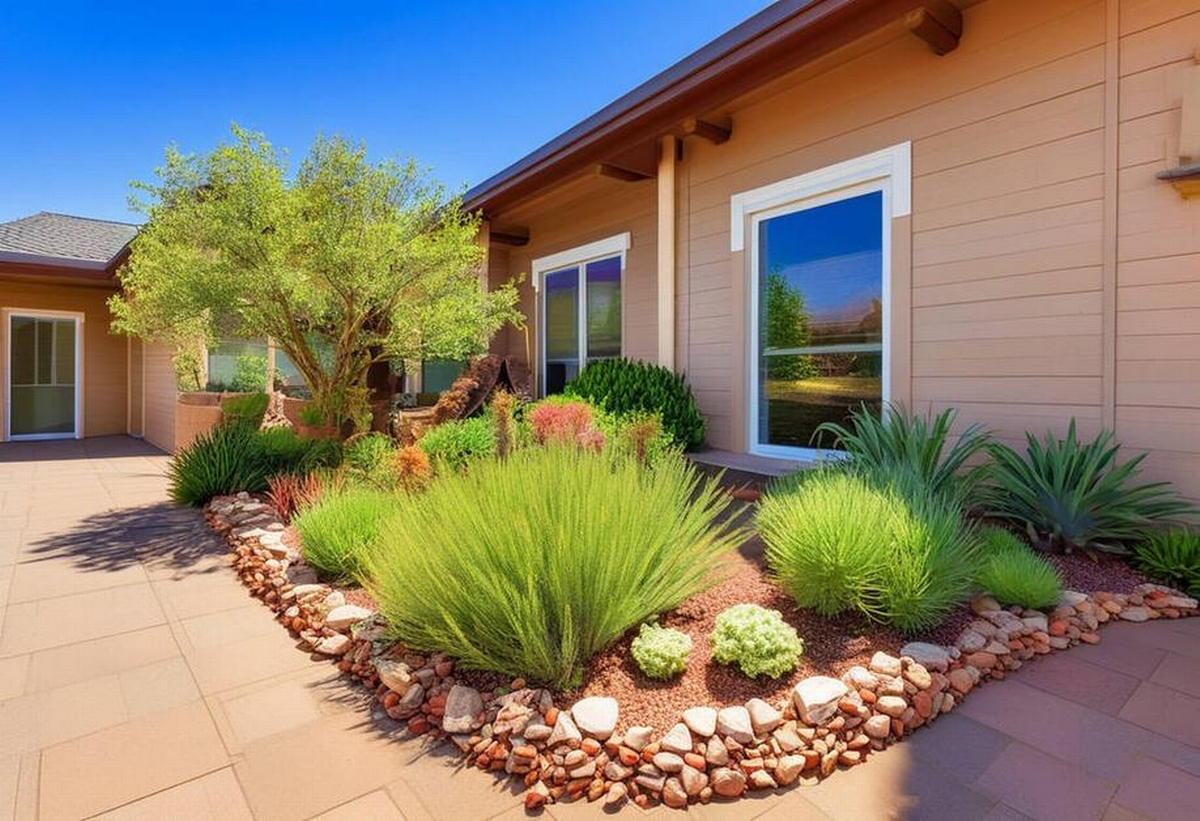November 15, 2025
Battle of the Green Giants: Native Plants vs. Exotic Species in Landscaping
Choosing between native and exotic plants is an important decision for anyone reaching out to landscaping contractors in Marshfield and beyond. Native...

In an era of increasing water scarcity and environmental awareness, the need for sustainable landscaping solutions has never been more pressing. Homeowners and commercial properties alike are increasingly seeking ways to reduce their water consumption without sacrificing beauty and functionality in their outdoor spaces. Enter xeriscaping - a landscaping practice specifically designed for efficient water use. Imagine transforming your yard into an oasis that not only showcases lush, thriving plants but also conserves one of our most precious resources: water. It's all possible with xeriscaping.
The importance of this water-smart landscaping technique is amplified by the growing concerns of climate change and frequent droughts. As more communities encourage or even require xeriscaping, understanding its principles and benefits becomes critical. Whether you're a homeowner or business owner, adopting xeriscaping can lead to cost savings, environmental benefits, and an aesthetically pleasing landscape that stands the test of time. For those considering xeriscaping, partnering with a local lawn care and landscaping company in Madison, Marshfield, and nearby areas can be crucial in tailoring these concepts to fit the regional climate and soil conditions.
Xeriscaping, derived from the Greek word 'xeros' meaning dry, is a landscaping method developed for environments susceptible to drought or those where water conservation is practiced. The primary goal of xeriscaping is to create a visually appealing landscape that minimizes water usage. While this might sound limiting, the possibilities within xeriscaping are virtually endless, allowing for creativity and diversity.
To appreciate the value of xeriscaping, it's helpful to understand its foundational principles:
A common misconception about xeriscaping is that it leads to barren or rock-filled landscapes. In reality, xeriscaping can incorporate a wide range of colorful and lush plants. By mixing textures and heights, you can create a dynamic and vibrant outdoor space.
The success of a xeriscape largely depends on selecting the right plants. Native species are often the best choice, as they are adapted to the local climate and soil conditions. In Madison, WI, look for plants like purple coneflower, black-eyed Susan, and yarrow, which not only provide beautiful blooms but also thrive with minimal watering.
Xeriscaping brings a multitude of benefits beyond water conservation. Here's how it positively impacts various aspects of your life and environment:
While xeriscaping offers considerable advantages, it's not without its challenges. However, with the right approach, these obstacles can be effectively managed.
To further your understanding of xeriscaping, consider engaging with online tutorials, attending local workshops, or arranging consultations with experts who specialize in landscaping services in Madison and the surrounding areas. Visual learners can find value in watching step-by-step guides or before-and-after videos showcasing successful xeriscape transformations.
For those ready to take their first steps into xeriscaping or enhance their existing landscapes, contacting knowledgeable professionals can be the turning point in achieving a water-efficient paradise.
The vision of a sustainable, verdant landscape that conserves water is attainable with the principles of xeriscaping. By prioritizing thoughtful design and selecting the right plants, you can create an outdoor space that is both eco-conscious and breathtaking. Embracing xeriscaping is not only a step towards responsible resource use but also a statement of environmental stewardship.
If you're inspired to transform your landscape in Madison and nearby areas, Beaver Creek Nursery & Landscaping LLC offers specialized services to help you realize your dream landscape efficiently. Whether it's land clearing for new projects or maintaining an existing xeriscape, their expert team is poised to provide top-notch service. Contact Beaver Creek Nursery & Landscaping LLC today and take the first step towards a sustainable and beautiful future.
Permit requirements for tree removal vary based on your location and the size of the tree. We can help determine if a permit is necessary and guide you through the process to ensure compliance with local regulations.
If your lawn has bare patches, thinning grass, or persistent weeds, it may be time for new lawn installation or repair. Our team will assess your soil and recommend the best grass type for your property.
The duration depends on the method used. Sod installation provides an instant green lawn and is typically ready for use in a few weeks, while seeding takes longer but is a cost-effective option.
Typically, we recommend weekly or biweekly services for mowing, pruning and trimming, and general upkeep. Seasonal maintenance, such as aeration, fertilizing, and leaf cleanup, is also essential to keep your yard looking its best year-round.
The best time to plant trees and shrubs is usually in early spring or fall when temperatures are mild, and roots have time to establish before extreme weather conditions. We can help you select and plant the right greenery for your yard.
November 15, 2025
Choosing between native and exotic plants is an important decision for anyone reaching out to landscaping contractors in Marshfield and beyond. Native...
November 1, 2025
Imagine stepping into your garden and being greeted by the vibrant colors and lush greenery that make up your personal oasis. This dream is within rea...